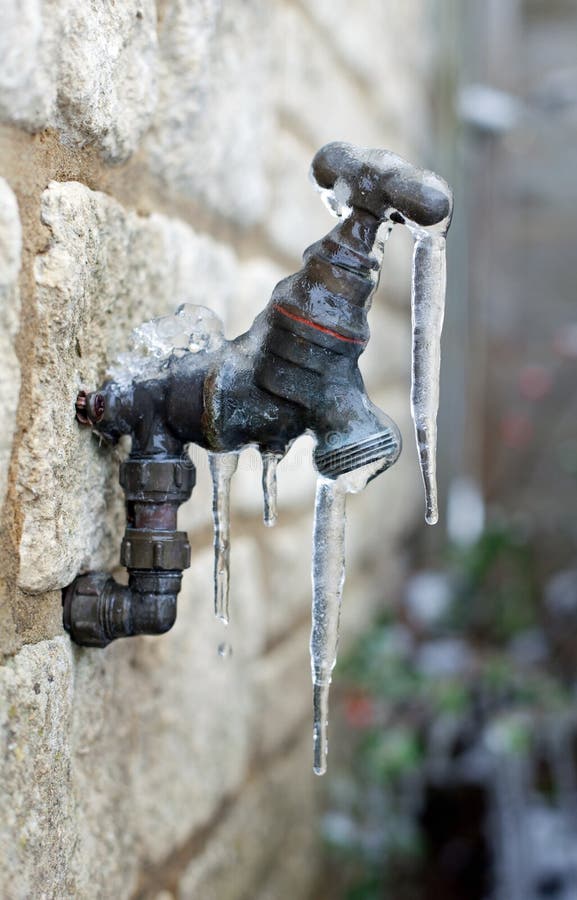Tips to Avoid Frozen Plumbing in Winter: Professional Guidance
Tips to Avoid Frozen Plumbing in Winter: Professional Guidance
Blog Article
Listed here down the page you can locate a bunch of great information pertaining to Preventing and dealing with frozen pipes.

Winter can damage your plumbing, especially by freezing pipes. Here's just how to avoid it from occurring and what to do if it does.
Introduction
As temperature levels decline, the threat of icy pipelines increases, possibly leading to expensive repairs and water damages. Recognizing just how to prevent icy pipes is critical for house owners in cool environments.
Recognizing Icy Pipelines
What triggers pipes to freeze?
Pipes freeze when exposed to temperature levels listed below 32 ° F (0 ° C) for extended durations. As water inside the pipes ices up, it increases, putting pressure on the pipeline wall surfaces and potentially causing them to rupture.
Threats and damages
Frozen pipes can bring about water supply interruptions, residential or commercial property damage, and costly fixings. Ruptured pipelines can flood homes and create considerable structural damages.
Signs of Frozen Pipes
Determining icy pipelines early can prevent them from rupturing.
Exactly how to recognize icy pipes
Search for decreased water flow from taps, uncommon odors or noises from pipelines, and visible frost on exposed pipelines.
Avoidance Tips
Shielding at risk pipes
Wrap pipelines in insulation sleeves or use warmth tape to secure them from freezing temperatures. Concentrate on pipes in unheated or external areas of the home.
Home heating methods
Maintain interior rooms effectively heated, specifically areas with plumbing. Open up cabinet doors to enable cozy air to circulate around pipes under sinks.
Shielding Outdoor Plumbing
Yard tubes and outdoor faucets
Detach and drain pipes yard hose pipes before winter months. Set up frost-proof spigots or cover outside taps with shielded caps.
What to Do If Your Pipes Freeze
Immediate actions to take
If you presume icy pipelines, keep faucets available to eliminate stress as the ice thaws. Use a hairdryer or towels soaked in hot water to thaw pipes slowly.
Long-Term Solutions
Structural modifications
Think about rerouting pipelines far from outside wall surfaces or unheated areas. Add additional insulation to attic rooms, cellars, and crawl spaces.
Upgrading insulation
Invest in premium insulation for pipes, attic rooms, and wall surfaces. Appropriate insulation assists preserve constant temperature levels and lowers the threat of frozen pipes.
Final thought
Stopping icy pipelines requires positive steps and quick responses. By understanding the reasons, indicators, and safety nets, house owners can secure their plumbing throughout cold weather.
6 Proven Ways to Prevent Frozen Pipes and Protect Your Home
Disconnect and Drain Garden Hoses
Before winter arrives, start by disconnecting your garden hoses and draining any remaining water. Close the shut-off valves that supply outdoor hose bibs and leave the outdoor faucet open to allow any residual water to drain. For extra protection, consider using faucet covers throughout the colder months. It’s also important to drain water from any sprinkler supply lines following the manufacturer’s directions.
Insulate Exposed Pipes
Insulating your pipes is an effective way to prevent freezing. Pipe insulation is readily available at home improvement stores and is relatively inexpensive. Pay close attention to pipes in unheated areas such as the attic, basement, crawl spaces, or garage. Apply foam insulation generously to create a buffer against the cold. You can also wrap your pipes in heat tape or thermostat-controlled heat cables for added warmth.
Seal Air Leaks
Inspect your home for any cracks or openings that could let in cold air. Seal any holes around the piping in interior or exterior walls, as well as the sill plates where your home rests on its foundation. Additionally, make sure to keep your garage door closed unless you’re entering or exiting. Leaving it open creates a significant air leak that can lead to frozen pipes.
Allow Warm Air Circulation
During cold snaps, it’s essential to allow warm air to circulate evenly throughout your home. Leave interior doors ajar to promote better airflow. Open kitchen and bathroom cabinets to help distribute heat consistently around the rooms. If you have small children or pets, be sure to remove any household chemicals or potentially harmful cleaners from open cabinets for safety.
Let Faucets Drip
A small trickle of water can make a big difference in preventing ice formation inside your pipes. When temperatures drop significantly, start a drip of water from all faucets served by exposed pipes. This continuous flow helps prevent the water from freezing. Additionally, running a few faucets slightly can relieve pressure inside the pipes, reducing the chances of a rupture if the water inside does freeze.
https://choateshvac.com/6-proven-ways-to-prevent-frozen-pipes-and-protect-your-home/

As a passionate reader about How To Avoid Freezing Pipes, I thought sharing that editorial was a smart idea. If you please take a moment to share this blog if you enjoyed reading it. Thanks for going through it.
Book Inspection Report this page